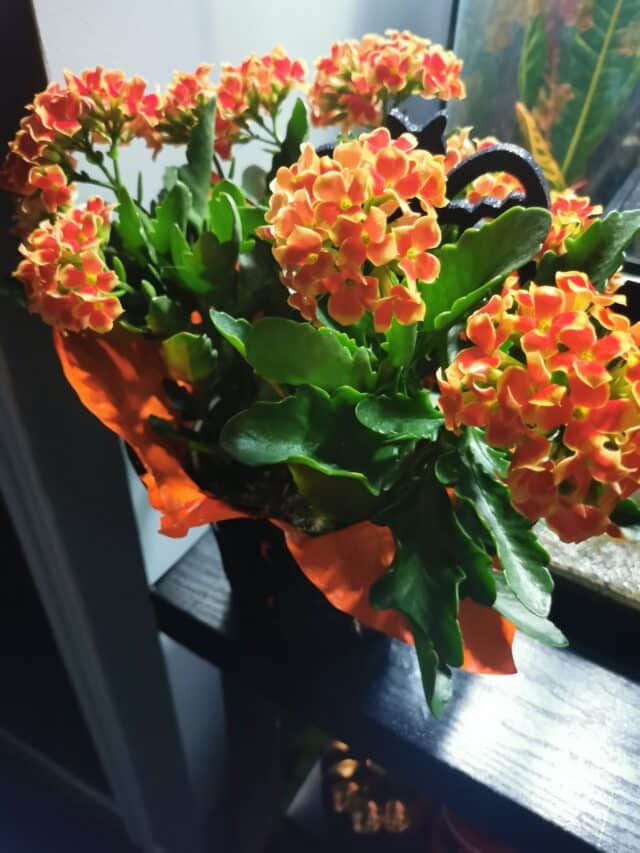When it comes to houseplants, the lovely Kalanchoe is a popular choice among plant enthusiasts. With its vibrant blooms and resilience, it can bring a touch of nature indoors. However, pet owners should be aware of the potential risks that Kalanchoe poses to their feline friends. Understanding the toxicity of Kalanchoe to cats, identifying symptoms of ingestion, and adopting preventive measures are essential for ensuring a harmonious home.
Let’s delve into the nature of Kalanchoe and its impact on cats, providing necessary insights and practical advice for safeguarding your pets.
Understanding Kalanchoe: A Potted Beauty
Kalanchoe is a genus of succulent plants known for their thick, fleshy leaves and clusters of small, tubular flowers. Among the many species, Kalanchoe blossfeldiana is the most commonly cultivated, renowned for its brightly colored flowers that bloom throughout the year. Not only is it cherished for its decorative appeal, but its low-maintenance requirements make it an attractive option for those new to gardening.
In households where cats roam freely, the presence of Kalanchoe requires vigilance. The ASPCA has classified this vibrant plant as toxic to cats due to certain compounds found in its leaves and flowers. The toxicity primarily stems from the presence of bufadienolides, which can have a negative impact on a cat’s health.
Identifying Symptoms of Kalanchoe Toxicity
Pet owners must be vigilant in observing their cats for any symptoms of Kalanchoe toxicity. Cats are naturally curious creatures, often exploring their environment by nibbling on various plants. Signs of poisoning can manifest in varying degrees and may include:
– **Gastrointestinal Disturbances**: Common symptoms encompass vomiting, diarrhea, and excessive salivation. A cat that ingests Kalanchoe may experience discomfort due to the irritation it causes to the digestive tract.
– **Cardiac Complications**: The bufadienolides present in Kalanchoe can interfere with normal heart function, leading to arrhythmias or other cardiac irregularities. Symptoms can include lethargy, irregular breathing, or a decreased appetite, hinting at potential cardiac distress.
– **Neurological Symptoms**: In severe cases, Kalanchoe poisoning may result in neurological symptoms such as tremors, seizures, or disorientation. Though rare, these symptoms require immediate veterinary care to prevent further complications.
It is crucial for pet owners to be astute observers of their cats’ behavior. If you suspect your feline friend has ingested Kalanchoe, it is imperative to consult a veterinarian promptly. Early intervention can significantly improve recovery outcomes.
Preventing Kalanchoe Exposure: Safe Practices for Pet Owners
Keeping a Kalanchoe plant in your home does not mean you must deprive your living space of its beauty. Instead, adopt certain practices to ensure pet safety while enjoying your greenery:
– **Strategic Placement**: Position Kalanchoe plants in elevated areas or rooms that are off-limits to your pets. Utilizing shelves, hanging baskets, or plant stands can significantly minimize your cat’s access to these toxic plants.
– **Educate Household Members**: Ensure that everyone in your household understands the potential dangers that Kalanchoe poses to your feline companion. Awareness is key in preventing accidental ingestion.
– **Opt for Pet-Safe Alternatives**: If you find it difficult to restrict access to Kalanchoe, consider opting for pet-safe houseplants. There are numerous options, such as spider plants, Boston ferns, and bamboo palms, that can enhance your interior decor without jeopardizing your pet’s health.
Responding to Accidental Ingestion: Essential Steps
In the unfortunate event that your cat ingests Kalanchoe, swift action is needed. Follow these essential steps to manage the situation:
– **Assess the Situation**: Determine how much of the plant your cat may have consumed. If possible, note the timeframe and the exact part of the plant ingested.
– **Contact a Veterinarian**: Reach out to your veterinarian or an emergency pet clinic immediately. Provide them with information regarding your cat’s symptoms and the type of plant involved.
– **Do Not Induce Vomiting Without Guidance**: While inducing vomiting might seem like a reasonable action, it should only be done under the guidance of a professional. Depending on the situation, a veterinarian may recommend specific treatments or interventions.
Conclusion: Prioritizing Pet Safety
Ultimately, ensuring the safety of your feline companions while cultivating beautiful plants like Kalanchoe requires diligence and proactive measures. By understanding the potential dangers associated with Kalanchoe and recognizing symptoms of toxicity, you can create an environment where both plants and pets can coexist harmoniously.
With the right precautions, plant enthusiasts can continue to enjoy the aesthetic appeal of Kalanchoe without compromising the health and well-being of their cats. By equipping yourself with knowledge and adopting safe gardening practices, you are contributing to a safer and more enjoyable home environment for all its inhabitants.





Leave a Comment